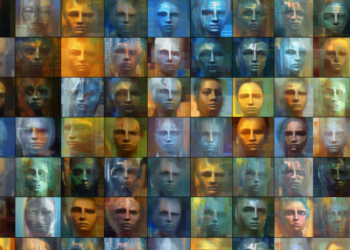In the field of machine learning (ML), fairness and ethics have become central concerns, evolving from theoretical considerations to indispensable aspects in the lifecycle of algorithm development. The presence of biases not only undermines the effectiveness of ML models but also propagates and perpetuates systemic discrimination. This article delves into the underlying mechanisms of bias in ML, describes current methodologies for mitigating it, and discusses the associated ethical challenges, offering insight into the future of fair practices in artificial intelligence.
Origins and Manifestations of Bias in ML Models
The genesis of biases in ML algorithms can be attributed to diverse sources: biased datasets, prejudiced algorithms, and the socioeconomic context of the application. Datasets, as imperfect reflections of reality, often contain discriminatory patterns present in society. These can be revealed through biased historical provenances, unbalanced representations of population samples, or subjective labeling. For instance, Barocas and Selbst (2016) demonstrated how datasets could perpetuate or even exacerbate existing inequalities.
Algorithms, while mathematically neutral, can inadvertently include predispositions through the learning of characteristics correlated with sensitive variables such as race, gender, or age. In certain scenarios, ML models may develop decision-making strategies that, while statistically optimal, result in socially unjust outcomes. Algorithmic fairness is then revealed to be a multidimensional problem, where fairness cannot be simplified into a single metric (Corbett-Davies and Goel, 2018).
Methodologies for Bias Mitigation
Data Pre-processing
Early intervention in datasets is crucial to limit the learning of undue correlations. Techniques such as sample balancing, instance reweighting, and prototype extrapolation contribute to an equitable representation of sensitive variables. These techniques aim to adjust the data distribution to reflect parity between protected and unprotected groups. For example, Kamiran and Calders (2012) introduced a method for reweighting examples in datasets that demonstrated improved fairness without significantly sacrificing model accuracy.
During Algorithm Training
During the training process, the incorporation of constraints and regularizations as part of the algorithm’s objective function can steer learning towards less biased solutions. Techniques like disparity reduction (Hardt et al., 2016) focus on balancing error rates among groups, modifying the loss function to penalize specific inequalities.
Post-processing
Post-processing involves adjusting the model’s predictions to achieve parity in performance metrics across groups. It is one of the least intrusive approaches but may result in a trade-off between equity and model accuracy. Calibrated fairness (Pleiss et al., 2017) is a prominent example, recalibrating the output probabilities of a classifier to meet parity constraints.
Ethical Challenges in Bias Mitigation
Bias mitigation in ML is not free from ethical dilemmas. Optimizing certain fairness metrics may result in the degradation of others (Kleinberg et al., 2016), posing the problem of selecting the appropriate metric, a decision that is inherently normative and subject to debate. Moreover, well-intentioned interventions can lead to counterproductive effects, like scenarios where minorities may be overprotected or, conversely, more exposed (Dwork et al., 2012).
Moreover, efforts to achieve algorithmic equity present the risk of simplifying the complexity of human identities into rigid categories, overlooking intersectionality and the multitude of factors that constitute discrimination in real life. The ethics of representation becomes a central issue in the selection and treatment of sensitive variables (Hanna et al., 2020).
Realizing the Ethical Future in ML
Contemplating responsible practice implies considering not only fairness in model construction but also transparency and accountability in their deployment. The explainability and audit of algorithms are established as pillars for public trust. The introduction of legal standards such as the General Data Protection Regulation (GDPR) and the growing demand for ethical certifications for technology companies predict a future where ethics is not an option, but an operational necessity.
Conclusion
Artificial intelligence is not immune to human biases, and its proper implementation requires constant vigilance against the biases inherent in our data and processes. The search for fairness in machine learning is an ongoing challenge that involves a balance between technical precision and social justice. As the ML community becomes increasingly aware of its ethical responsibility, paths open towards innovations that are not only advanced in terms of performance but are also fair and equitable. The combination of technical efforts with a deeper reflection on ethics is the hallmark of a future where artificial intelligence performs as a true agent of positive change.






















